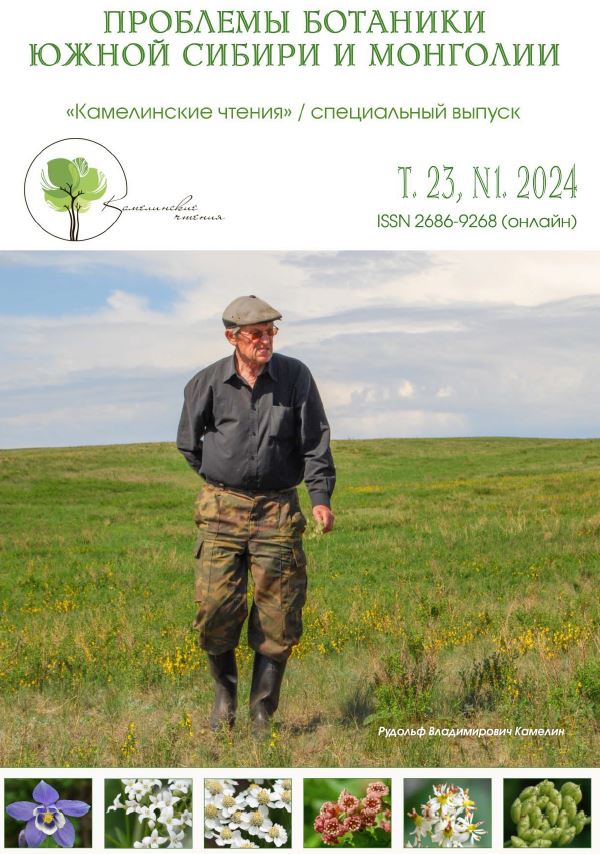Current trends in anthropogenic transformation of the flora of Pripyat Polesie (Belarus)
УДК 581.93+581.524.34(476)
Abstract
The article characterizes the main trends in the anthropogenic transformation of the flora of Pripyat Polesie, a natural region of the southern part of Belarus, which experienced the impact of large-scale drainage reclamation in the second half of the 20th century. As a result of comparison of floristic lists from different time periods, the values of the main indicators of anthropogenic transformation of the flora were revealed. The native flora of the region has been depleted by 3.3 % over a hundred-year period, while the proportion of adventitious species in the spontaneous flora has increased from 28 to 42 %. There was a transformation of the natural taxonomic structure and the erasure of regional features of the flora of the temperate zone of the Holarctic due to the introduction of adventive species of predominantly southern origin. The flora synanthropization index has currently reached 0.60, and apophytization index 0.31, which indicates a significant proportion of native and adventive species adapted to disturbed habitats. The coefficient of synanthropization of the flora of Pripyat Polesie was determined to be 60.4 %, indicating its transitional state between the III medium and IV strong stages of anthropogenic transformation. The high level of flora dynamism, due to the active processes of extinction of native species and the introduction of new adventive species, is confirmed by the increase in the turnover rate of species of spontaneous flora over the last half century from 0.12 to 0.44. An intensification of the processes of introduction of alien species into natural phytocenoses has been noted, the consequence of which is the presence of 50 invasive species here.
Downloads
Metrics
References
Березуцкий М. А., Кашин А. С. Антропогенная трансформация флоры и растительности. - Саратов: Наука, 2008. - 100 с.
Горчаковский П. Л. Антропогенные изменения растительности: мониторинг, оценка, прогнозирование // Экология, 1984. - № 5. - С. 3-16.
Горчаковский П. Л., Козлова Е. В. Синантропизация растительного покрова в условиях заповедного режима // Экология, 1998. - № 3. - С. 171-177.
Мялик А. Н. Анализ географического распространения видов аборигенной флоры Припятского Полесья // Вес. Нац. акад. навук Беларусь Сер. бiял. навук., 2016. - № 2. - С. 15-21.
Прокопьев Е. П., Рыбина Т. А., МерзляковаИ. Е. Программа и методика исследований флоры сосудистых растений особо охраняемых природных территорий г. Томска // Вестн. Томск. гос. ун-та, 2009. - № 322. - С. 243-247.
Протопопова В. В. Синантропная флора Украины и пути ее развития. - Киев: Наук. думка, 1991. - 202 с.
Abbott J., Black R. Changes in species composition of floras on islets near Perth, Western Australia // J. Biogeogr, 1980. - № 7. - P. 399-410.
Maltseva S. Y., Maltsev Y. I., Solonenko I. A., Bren O. G. Anthropogenic transformation of the flora of urbanoecosystems of the Northern Pryazov territories // Biosystems Diversity, 2017. - No. 25(3). - P. 222-227. DOI: 10.15421/011734
Mialik A. Invasive species of the flora of the central part of the Belarusian Polesye // Actual environmental problems: proceedings of the VIII International Scientific Conference (Minsk, November 22-23, 2018). - Minsk, 2018. - P. 131-132.



